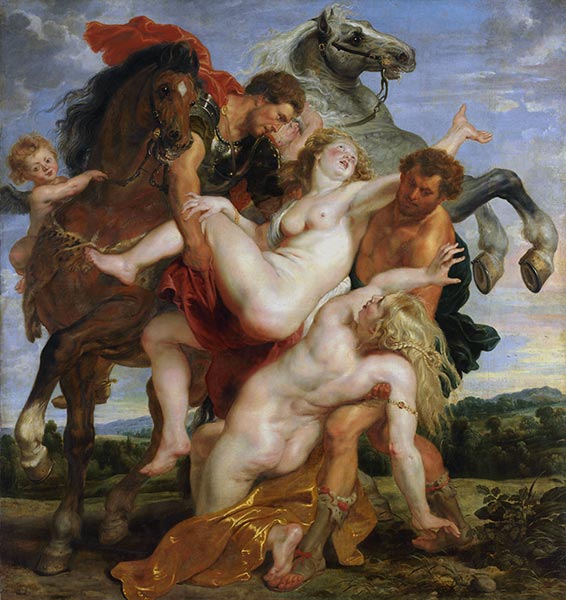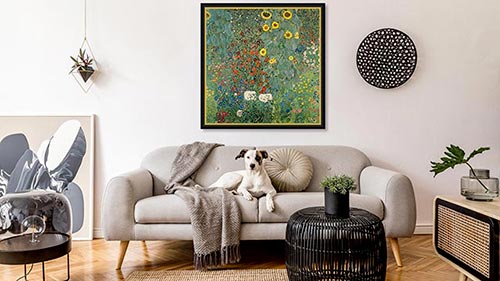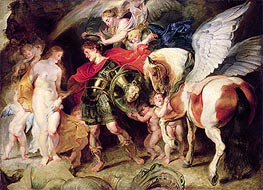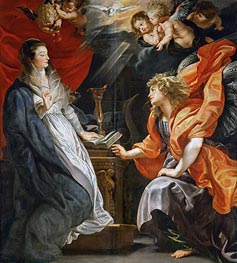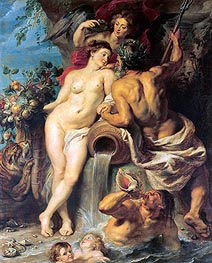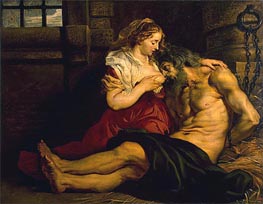The Rape of the Daughters of Leucippus, 1618 by Peter Paul Rubens
Canvas Print - 3114-RPP
Location: Alte Pinakothek, Munich, GermanyOriginal Size: 224 x 210.5 cm
Giclée Canvas Print | $77.26 USD
Your Selection
Customize Your Print
By using the red up or down arrows, you have the option to proportionally increase or decrease the printed area in inches as per your preference.
*Max printing size: 41.3 x 38.9 in
*Max framing size: Long side up to 28"
"The Rape of the Daughters of Leucippus" will be custom-printed for your order using the latest giclée printing technology. This technique ensures that the Canvas Print captures an exceptional level of detail, showcasing vibrant and vivid colors with remarkable clarity.
Our use of the finest quality, fine-textured canvas lends art reproductions a painting-like appearance. Combined with a satin-gloss coating, it delivers exceptional print outcomes, showcasing vivid colors, intricate details, deep blacks, and impeccable contrasts. The canvas structure is also highly compatible with canvas stretching frames, further enhancing its versatility.
To ensure proper stretching of the artwork on the stretcher-bar, we add additional blank borders around the printed area on all sides.
Our printing process utilizes cutting-edge technology and employs the Giclée printmaking method, ensuring exceptional quality. The colors undergo independent verification, guaranteeing a lifespan of over 100 years.
Please note that there are postal restrictions limiting the size of framed prints to a maximum of 28 inches along the longest side of the painting. If you desire a larger art print, we recommend utilizing the services of your local framing studio.
*It is important to mention that the framing option is unavailable for certain paintings, such as those with oval or round shapes.
If you select a frameless art print of "The Rape of the Daughters of Leucippus" by Rubens, it will be prepared for shipment within 48 hours. However, if you prefer a framed artwork, the printing and framing process will typically require approximately 7-8 days before it is ready to be shipped.
We provide complimentary delivery for up to two unframed (rolled-up) art prints in a single order. Our standard delivery is free and typically takes 10-14 working days to arrive.
For faster shipping, we also offer express DHL shipping, which usually takes 2-4 working days. The cost of express shipping is determined by the weight and volume of the shipment, as well as the delivery destination.
Once you have added the paintings to your shopping cart, you can use the "Shipping estimates" tool to obtain information about available transport services and their respective prices.
All unframed art prints are delivered rolled up in secure postal tubes, ensuring their protection during transportation. Framed art prints, on the other hand, are shipped in cardboard packaging with additional corner protectors for added safety.
Painting Information
In "The Abduction of the Daughters of Leucippus", Rubens has presented a subject rarely developed in more recent art. The legend of the Dioscuri, which has come down to us in various versions, tells us that the mother of both was the beautiful Leda, but Castor was the mortal son of the Spartan king Tyndareus, and Pollux the son of Zeus who received immortality. The inseparable brothers once kidnapped the daughters of their uncle Leucippus, who were the brides of the powerful Hades and the acutely gifted Linnaeus. A fierce struggle broke out between one brother and the other, in which the mortal Castor fell slain. Zeus could not grant the ardent request of Pollux to send him also to the kingdom of shadows to his beloved brother, but decreed that from that time the Dioscuri should spend one day at a time in the underworld, and the next on Olympus.
Rubens chose for his painting the moment when the Dioscuri master their lovely prey. Abduction and resistance are conveyed differently in the two couples. Castor in Roman armour on his horse is the restrained male knight who lifts the girl to him with gentle strength; resistance turns to surrender, the young woman's right hand now seeks contact with her captor, and the little god of love manages to restrain the horse without much effort. At the other pair, however, the girl fiercely defends herself, wriggling in Pollux's stern embrace; his horse - as impetuous as the rider - stands on its hind legs and little Eros finds it very difficult to tame it. The mythological scene thus becomes a penetrating picture of the relationship between the two sexes, a theme that has received too many layers of interpretation throughout Rubens's oeuvre. The group is composed in the form of a standing square at its apex, and, enclosed tightly on all sides by the frame, sweeps upwards with monumental suggestiveness. The plastically modelled and artfully interwoven figures stand out as a sculptural group against the canvas. The colouring is distinguished by an intensity characteristic of this period of the master's work.
